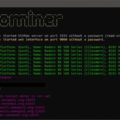

Since Ethereum Classic (ETC) is about to switch to the DAG epoch 350, and Ethereum (ETH) is about to follow it in about a month, miners who still use AMD Radeon GPUs with 4 GB of video memory can have problems. So, we see some updated Ethash mining software that fixes potential issues with a DAG growing near the 4GB VRAM limit and is trying to extend the use of these graphics cards to the very last possible time. Miners with 4 GB of VRAM video memory can have problems with the main card if they do not use the integrated graphics processor due to the increased memory usage of the main card in Windows, so the Intel integrated graphics processor for the main card can help, alternatively switching to the Linux operating system, if you are currently using windows, it can also help get a few more eras of DAG. You can also consider replacing the main graphics card with one that has more video memory available to compensate for the increased use of VRAM in the Windows operating system.
The latest PhoenixMiner 5.0b update adds support for mining with AMD 4GB cards after the DAG 350 era (ETC is now at # 349, ETH at # 338). Depending on the OS version and drivers that you are using with this update, you may be able to use AMD 4GB GPUs before the era of # 372- # 373 for Windows and # 380 for Linux. PhoenixMiner is the fastest (possibly the fastest) Ethash (ETH, ETC, Muiscoin, EXP, UBQ, etc.) Miner that supports AMD and Nvidia cards (including in mixed mining installations). It runs on Windows x64 and Linux x64 and pays developers only 0.65%. PhoenixMiner also supports Ubqhash for mining UBQ, ProgPOW for mining BCI and dual mining Ethash / Ubqhash with Blake2s. According to miner developers, the PhoenixMiner speed is usually higher than that of the Claymore Ethereum miner in ETH mode only (increase in speed by about 0.4-1.3%, although your results may be slightly lower or higher depending on the GPUs). To achieve the maximum possible speed on AMD cards, you may need to manually adjust the GPU tuning factor (a number from 8 to 400, which can be changed interactively using the + and – keys while the miner is working). If you used the Claymore Dual Ethereum miner, you can switch to PhoenixMiner with minimal hassle, as most command line options and Claymore configuration files are supported.
Download PhoenixMiner 5.0b
- GitHub:
Please note miners are often marked as malware by antivirus programs. This is not so, they are marked simply because they are cryptocurrency miners. If you do not trust the software, do not use it!
Release Notes:
IMPORTANT! All AMD card holders with 4 GB RAM must upgrade to PhoenixMiner 5.0b or later in order to continue mining after the DAG of the 350 era (i.e., about the beginning of June 2020 for ETC and mid July 2020 for ETH).
- Added support for mining with AMD 4 GB cards after the DAG Epoch 350. Depending on the version of the OS and drivers, you can use AMD 4 GB cards before the era of 372-373 under Windows and 380 under Linux.
- A new command line option -dagrestart has been added to bypass the problems with DAG allocation on AMD 4GB cards in some driver versions. See Readme.txt for more information.
- Added support for the latest AMD 20.4.2 drivers for Windows and 20.10-1048554 for Linux
- Many other minor improvements and fixes
A few important tips for developers to use their 4GB AMD cards with PhoenixMiner as long as possible:
- If your installation uses an Intel processor, use the integrated graphics as the primary display adapter. To do this, go to the BIOS settings of the motherboard and change the “Primary Display Adapter” to iGPU (or integrated graphics processor). In addition, if you are using a real monitor or HDMI connector, insert it into the video output of the motherboard.
- If you cannot use the integrated GPU, replace the main GPU with 6 GB or 8 GB VRAM.
- Do not upgrade the AMD driver to a new one unless it is explicitly supported by PhoenixMiner. With AMD 4GB cards, this will not only lower your hash rate, but can also make mining impossible when the DAG era is above # 350.
- After the DAG era passes by # 350, the optimal -gt value for AMD 4GB cards may change, so try auto-tuning again after the DAG # 350 era to find the best GT values for cards.
What AMD drivers to use for mining under Windows:
- Good drivers: these are versions from 12/18/1.1 to 19.7.5 (inclusive) and from 12.19.2 to 20.4.2 (inclusive). This will allow you to mine until the DAG # 372- # 373 era and will not need to restart PhoenixMiner every time the DAG era changes.
- Not very good drivers: these are versions from 18.1.1 to 18.10.1 (inclusive) and from 19.8.1 to 19.12.1 (inclusive). This will allow you to work until the DAG era # 365- # 366 and will require a restart of PhoenixMiner each time the DAG era changes (for these drivers, this will be done automatically if you did not add the -dagrestart 0 command line option to explicitly disable auto-run again).
- Drivers older than 18.1.1 have not been tested to work with a 4 GB DAG.
What AMD drivers to use for mining under Linux:
- On Linux, all relatively recent drivers (i.e., the last 24-36 months) allow mining up to the era of # 378- # 380, but there are much more driver errors, so if you are comfortable with the current version of the driver, do not change it.






![TeamRedMiner v0.7.6.4 NIMIQ ALPHA RELEASE 4 [DOWNLOAD for WINDOWS & LINUX]](http://crypto-mining.blog/wp-content/uploads/2020/07/teamredminer_8-kopiya-120x120.jpg)





17 Comments So far